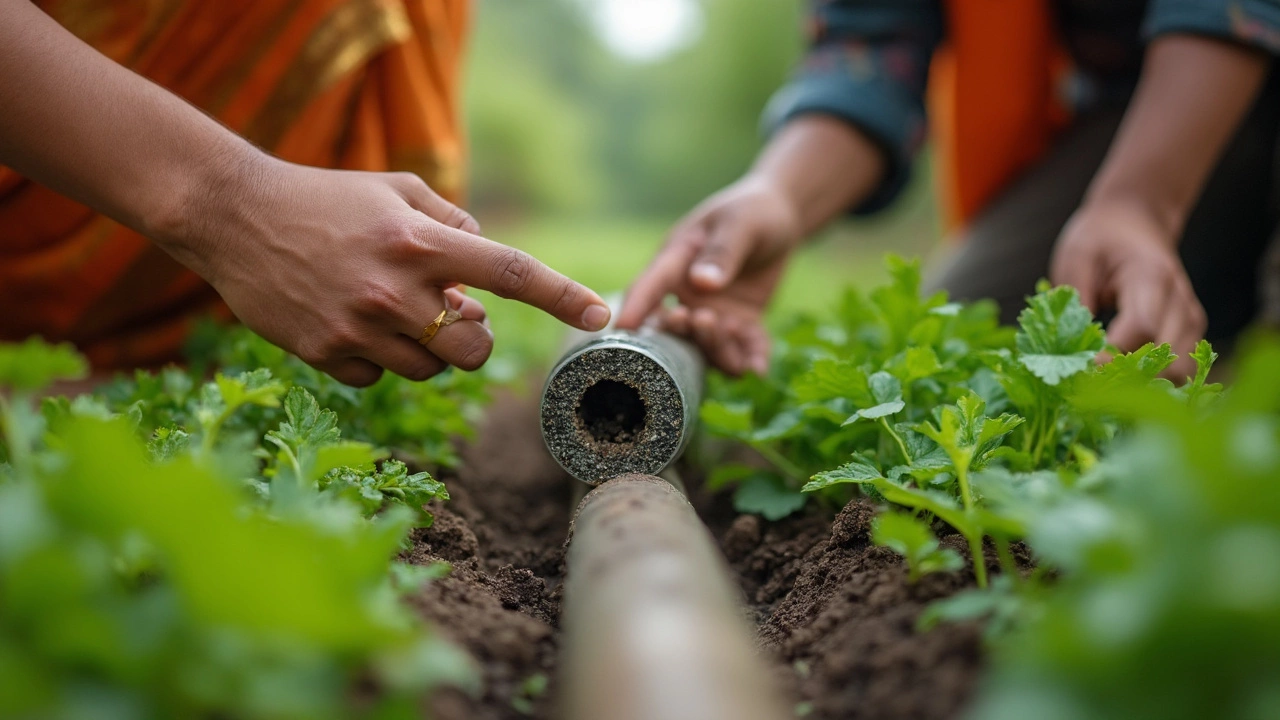Irrigation Maintenance Made Simple
When working with irrigation maintenance, the routine care and troubleshooting of garden water systems, you’re actually keeping plants healthy and saving water at the same time. Also known as irrigation upkeep, it covers everything from checking pipes for leaks to adjusting flow rates during a heat wave. This tag pulls together articles that show how a small amount of regular attention can prevent big problems later.
One of the most common tools in this job is drip irrigation, a low‑flow system that delivers water straight to the root zone. Drip lines reduce evaporation, cut down on runoff, and let you water each plant exactly the way it needs. But a drip system only works if you pair it with solid water management, the planning and control of water use across a garden or farm. Good water management means setting timers, monitoring seasonal rainfall, and adjusting schedules when the weather shifts. Without that, even the best drip kit will over‑water some spots and leave others thirsty.
Understanding soil moisture, the amount of water held in the soil at any given time is the next piece of the puzzle. A simple moisture meter can tell you whether the top inch is dry while deeper layers stay wet, helping you avoid both drought stress and root rot. Some growers even use sensors that feed data to a smartphone, turning a garden into a smart‑watering zone. When you know the exact moisture level, you can fine‑tune your drip emitters and keep the water bill low.
Key Practices for Effective Irrigation Maintenance
Mulching is often overlooked, yet it directly impacts how often you need to water. A good layer of organic mulch—like straw, wood chips, or compost—holds moisture, suppresses weeds, and slowly adds nutrients as it breaks down. By reducing surface evaporation, mulch lets your drip lines do their job longer between adjustments. When you combine mulching with regular system checks, you create a resilient water‑use strategy that works in both monsoon and dry seasons.
Routine checks should happen at least once a month. Look for cracked hoses, clogged emitters, and pressure drops. A quick pressure test with a gauge can reveal hidden leaks before they cause big water loss. If you spot a blockage, a simple soak of the emitter in warm water often restores flow. For larger issues, replace the faulty section rather than trying to patch it with tape—proper parts keep pressure stable and prevent future failures.
Seasonal adjustments are another must‑do. In the rainy months, you can shut off or heavily reduce the timer to avoid overwatering. Come the dry spell, increase run time by 10‑20 % and check the soil more often. Many of the articles below walk you through step‑by‑step guides for these seasonal swaps, so you won’t have to guess what’s right for your climate.
For DIY enthusiasts, installing a backflow preventer is a smart safety move. It protects your water source from any contaminants that might travel backwards through the system. The guide on irrigation maintenance explains which type fits most residential setups and how to install it without a plumber. Once installed, you’ll have peace of mind that your water stays clean and your garden stays healthy.
Water‑saving technologies keep evolving. Some growers now use solar‑powered pumps that run only when the sun shines, cutting electricity costs. Others pair drip lines with moisture‑sensing controllers that automatically pause watering when the soil is still wet. These innovations show how irrigation maintenance is not just about fixing leaks—it’s about adopting smarter tools that pay for themselves over time.
By the end of this page, you’ll see how the topics tie together: regular system audits, proper drip layout, accurate soil moisture readings, and mulch placement all form a loop that keeps water where it belongs—inside the root zone. The articles below dive deeper into each step, offering practical tips, troubleshooting tricks, and real‑world examples. Whether you’re a backyard hobbyist or managing a small farm, the guidance here will help you keep your irrigation running smoothly, save water, and grow healthier plants.
Drip Line Clogging: Why It Happens and How to Fix It
Clogged drip lines can turn a garden from lush to lackluster fast. This article breaks down the reasons your drip irrigation keeps getting blocked, from tiny bits of dirt to sneaky mineral buildups. Learn how water quality, neglected filters, and outside pests create headaches for gardeners. Get straight-to-the-point tips for preventing and tackling clogs. No more guessing—just clear, practical fixes so you can keep your plants happy.
- manufacturing
- India
- food processing
- garden tips
- rice cultivation
- government schemes
- balcony garden
- urban gardening
- balcony gardening
- profitable business
- business ideas
- plastic manufacturing
- drip irrigation
- plant care
- steel manufacturing
- sustainable gardening
- startup ideas
- steel industry
- flower gardening
- textile manufacturers






